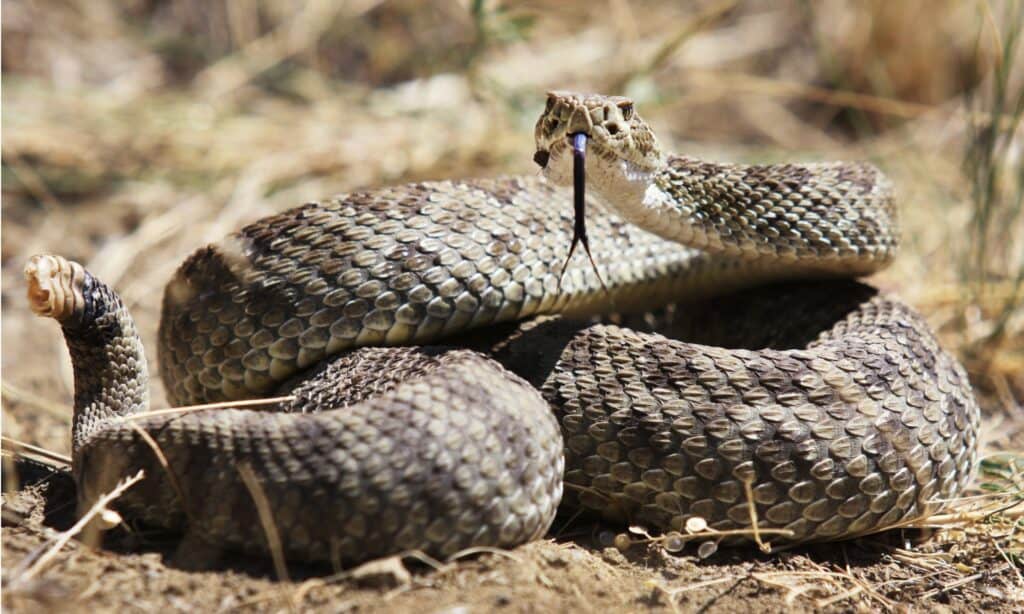There’s no point in having two sharp fangs that can deliver deadly venom if you end up biting yourself! Snakes such as the rattlesnake need to be able to fold their fangs away safely when they are not being used for defense or subduing prey. The prairie rattlesnake in this amazing footage gives us a perfect illustration of how that is done. Take a look!
Watch the Incredible Clip Now
©Protasov AN/Shutterstock.com
Where Are Prairie Rattlesnakes Normally Found?
The prairie rattlesnake, Crotalus viridis, is found throughout the midwestern United States. Their range extends from southwest Canada to the northwest of Mexico. This means you will spot them in New Mexico, Wyoming, Montana, and the northeast of Texas.
In terms of habitat, they like rocky and rugged environments, although you will also find them on open fields if there is plenty of prey! You may also spot them on forest floors and in dry grasslands. These snakes seek habitats with plenty of potential hideouts in rocks, branches, or holes dug by other animals. They use these to hide shelter when they are not hunting.
Are Prairie Rattlesnakes Dangerous to Humans?

Prairie
rattlesnakes
are venomous but will only attack when they feel threatened.
©iStock.com/HRossD
Prairie rattlesnakes are venomous and should be avoided. However, they will not come looking for you and only bite when threatened. When this happens, they open their mouths, and the two venom-bearing teeth fold down from the roof of the mouth. The venom flows through hollow cavities in the teeth and enters the victim’s body through the bite wound. Because they can control how much venom they release, they often only release less than half, so they still have some available.
You can avoid getting bitten by keeping an eye out for them when you are hiking. You can also listen out for the telltale rattle warning. Never try to handle one and give them plenty of space. If you get bitten, call 911 immediately because it is a medical emergency.
What Do Prairie Rattlesnakes Normally Eat?
These snakes are carnivores and need to hunt to stay alive. Most of their diet is made up of rodents, including voles, chipmunks, and wood rats. Most prairie rattlesnakes consume voles and deer mice more than any other rodent. However, they are also perfectly willing to eat birds, any types of eggs, and even other reptiles.
Their strike is unbelievably quick and accurate. They coil their body to generate more power, and their jaws adjust their biting position even if the prey tries to escape. As you can see in this clip, they fold their fangs neatly back into their mouth after the attack.
The photo featured at the top of this post is © iStock.com/Matt Kaminski
Discover the "Monster" Snake 5X Bigger than an Anaconda
Every day A-Z Animals sends out some of the most incredible facts in the world from our free newsletter. Want to discover the 10 most beautiful snakes in the world, a "snake island" where you're never more than 3 feet from danger, or a "monster" snake 5X larger than an anaconda? Then sign up right now and you'll start receiving our daily newsletter absolutely free.
Thank you for reading! Have some feedback for us? Contact the AZ Animals editorial team.







